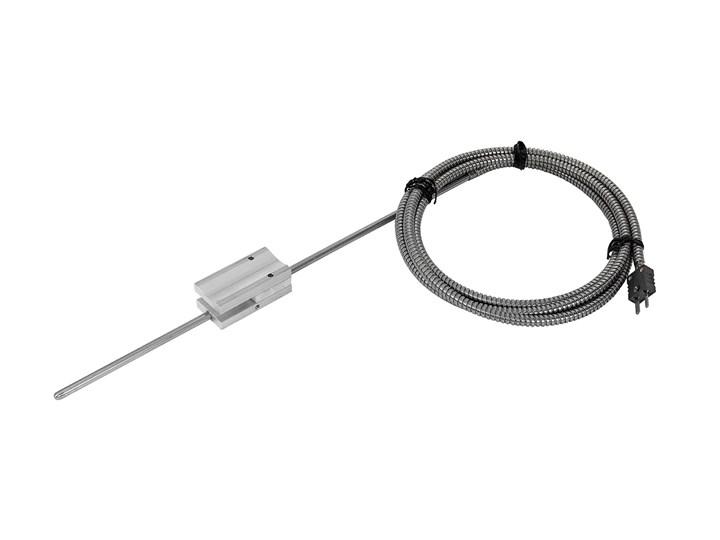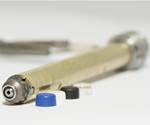Nozzle Leak Detector Helps Avoid Costly Repairs, Downtime
PCS Company’s Nozzle Leak Detector (NLD) can sense plastic leakage between the mold and the machine nozzle, catching the problem before major maintenance is required.
PCS Company has introduced the Nozzle Leak Detector (NLD) to help molders detect plastic leakage between the mold and the machine nozzle, preventing costly downtime and repairs. Caused by cracked nozzle tips, misaligned nozzles, plugged gates and other issues, nozzle leaks are a common problem that can cause time-consuming maintenance and repairs, resulting in lost productivity.
The NLD mounts directly onto the machine nozzle with a clamp and features a sensor that plugs into an alarm box. When the sensor detects a leak, the NLD sounds an alarm and triggers a visual alarm light. Input and output receptacles allow connection to the molding machine, which can be directed to stop the molding cycle immediately once a leak is detected. The alarm box operates on 120V power and allows users to set the temperature at which the alarm be triggered. PCS recommends setting the alarm at 100 to 150 F beneath the nozzle’s operating setpoint. An alarm silencer switch allows users to turn off the audible alarm until the leak has been fixed.
The NLD’s are made in the U.S. and available with four sizes of sensors to fit most injection machine nozzles. The sizes include 3-, 6-, 9- and 12-in units. They come with an alarm box, plugs and 60-in cable leads. PCS says the NLD’s are ideal for unattended molding machines and can eliminate the potential for hours of cleanup time and undue lost production. The NLD’s can be used as standalone units or with interlocks connected to the injection machine control. PCS noted that it currently has more than 1000 of the NLD’s in operation worldwide, including some customers with one on every molding machine in their plant.

PCS’s Nozzle Leak Detection (NLD) device can help molders avoid the costly and time-consuming downtime associates with resin leakage from the injection molding machine’s nozzle.
Photo Credit: PCS Company
Related Content
-
Back to Basics on Mold Venting (Part 1)
Here’s what you need to know to improve the quality of your parts and to protect your molds.
-
Understanding the Effect of Pressure Losses on Injection Molded Parts
The compressibility of plastics as a class of materials means the pressure punched into the machine control and the pressure the melt experiences at the end of fill within the mold will be very different. What does this difference mean for process consistency and part quality?
-
How to Design Three-Plate Molds, Part 1
There are many things to consider, and paying attention to the details can help avoid machine downtime and higher maintenance costs, and keep the customer happy.





